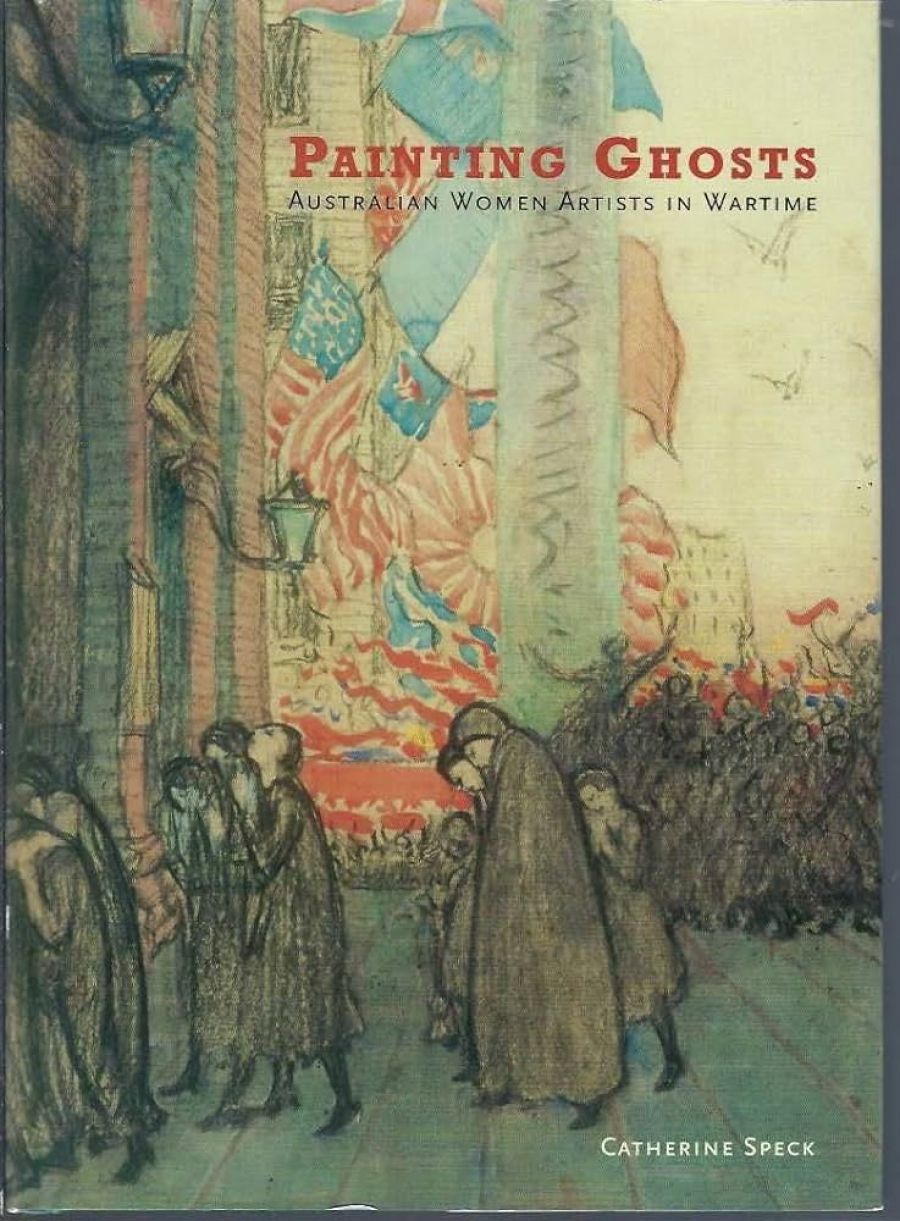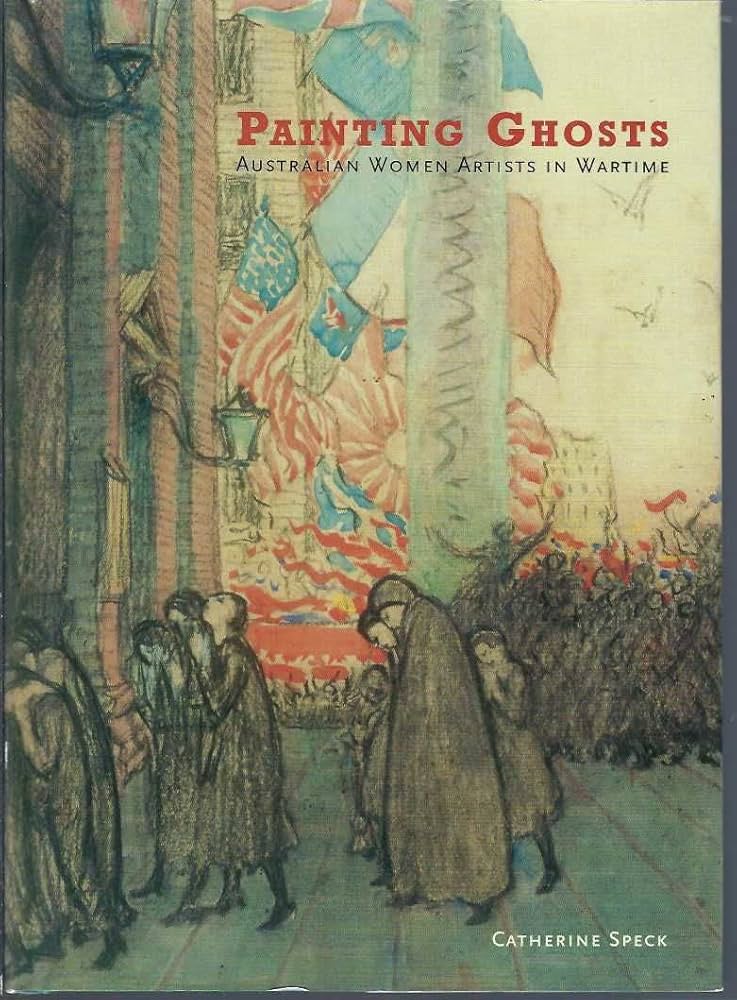
- Free Article: No
- Contents Category: Australian History
- Review Article: Yes
- Article Title: No Mere Medallions
- Online Only: No
- Custom Highlight Text:
Those attending art history conferences over the last few years have been beguiled by the papers given to Catherin Speck, based on her research into aspects of Australian women artists and war. Each paper has detailed newly uncovered artists, works and information, and whetted the appetite for Painting Ghosts: Australian Women Artists in Wartime: not a reproduction of Speck’s previous work but fresh information, artists and images (such as Adelaide painter Marjorie Gwynne) placed into better-known depictions of war by artists such as Hilda Rix Nicholas and Nora Heysen.
- Book 1 Title: Painting Ghosts
- Book 1 Subtitle: Australian Women Artists in Wartime
- Book 1 Biblio: Craftsman House, $70.00hb, 239pp
- Book 1 Cover Small (400 x 600):

- Book 1 Cover (800 x 1200):

Speck systematically proceeds through artists and images of both world wars, and finishes with a short chapter on Wendy Sharpe’s work in East Timor. Underpinning this is a well-informed social history and analysis of the works and the artists’ activities. Speck’s book is not a strident feminist text. Instead, her points are subtly understated. The reader is left in no doubt, however, that Australian art history – and history more generally – has suffered as a result of the failure of Australian governments to appoint any Australian women war artists during World War I and only three during World War II, and in their failure to collect women’s wartime art until quite recently.
Speck makes these points variously in her text and use of images. First, we have the poignant stories of Australian women artists, such as the sculptor Dora Ohlfsen who, during World War I, designed medals commemorating fallen soldiers as well as portrait medals of generals. Although these medals were sold under the British War Charities Act to raise money for disabled Australian and New Zealand soldiers, they were rejected by the Australian War Museum, mainly on the advice of Charles Bean, who opined that ‘a medallion is not a very interesting form of portrait’. Speck ends her record of other attempts by Ohlfsen to have her work acquired with the comment: ‘The Australian War Memorial now has Ohlfsen’s Anzac Memorial medallion in its collection, however it came not as a purchase but as a presentation.’ Similar accounts are given of rejections of work by Hilda Rix Nicholas, Florence Rodway and others. Speck shows that most women’s wartime art has been acquired by the Australian War Museum only in the last three decades. How much richer might our art history be had these works been collected and known earlier?
Second, there are the works made by women artists that demonstrate for the most part, a completely different reaction to war from that of their male counterparts. lso Rae. who happened to be in Etaples at the beginning of World War I. shows the dreary side of army life in her images of repetitive lines of dull-coloured tents and insignificant figures of soldiers. This dreariness is echoed in similar works by Preston and Marjorie Gwynne from World War II. Some women war artists depict an experience of war far removed from the heroic Anzac legend: Hilda Rix Nicholas, in her heartrending Desolation (c.1917), painted after her husband of five weeks was killed at the Battle of Flers; Vida Lahey in Rejoicing: and remembrance, Armistice Day, London 1918 (c.1924), which show. a group of grieving women preceding those rejoicing; and Grace Cossington Smith, who depicted Dawn landing (1944) as a sombre march into death by head-bowed youths, including her own nephew.
Then there are the depictions of women’s activities, both at war and on the home front, that were virtually unknown until now. Sybil Craig, one of the three Australian women to be appointed a war artist during World War II, produced unique images of women working in the Commonwealth Explosives Factory at Maribyrnong. These portrayals are not only extremely interesting as reportage but are well analysed by Speck in terms of their artistry. Dorrit Black provided an informative and artistically engaging depiction of women working at quilt-making; Dore Hawthorne made images of her fellow workers at the Lithgow Small Arms Factory, as did Elsa Russell of her WAAAF colleagues; and Grace Taylor showed members of the Australian Women’s Land Army engaged in the hard physical work required to maintain farm production.
Finally, Speck has included, by way of reference, occasional works by women appointed as war artists by the British and Canadian governments. Superior works by the English artist Laura Knight and the Canadian Paraskeva Clark serve to indicate the subject matter and quality of work that might have been part of Australian art history had more Australian women artists been appointed as war artists. While Preston and Cossington Smith produced works that commented on the war, we can only wonder what might have been produced had they been given government support. Perhaps we have an indication in the work of Nora Heysen whose strong portraits of nurses and ambulance drivers and her WAAAF Cook Corporal Joan Whipp (1945) contradict ‘painting ghosts’. The subjects and the artist are no ghosts, but strong, determined and capable women.
It is not often that an art history book can be called a page-turner, but Painting Ghosts is that. Speck’s research, which ranges from official art to social history, made this reader hurry through each page to see what new, exciting image or information would follow. The book not only adds a valuable dimension to our art history but also has wide general interest.


Comments powered by CComment